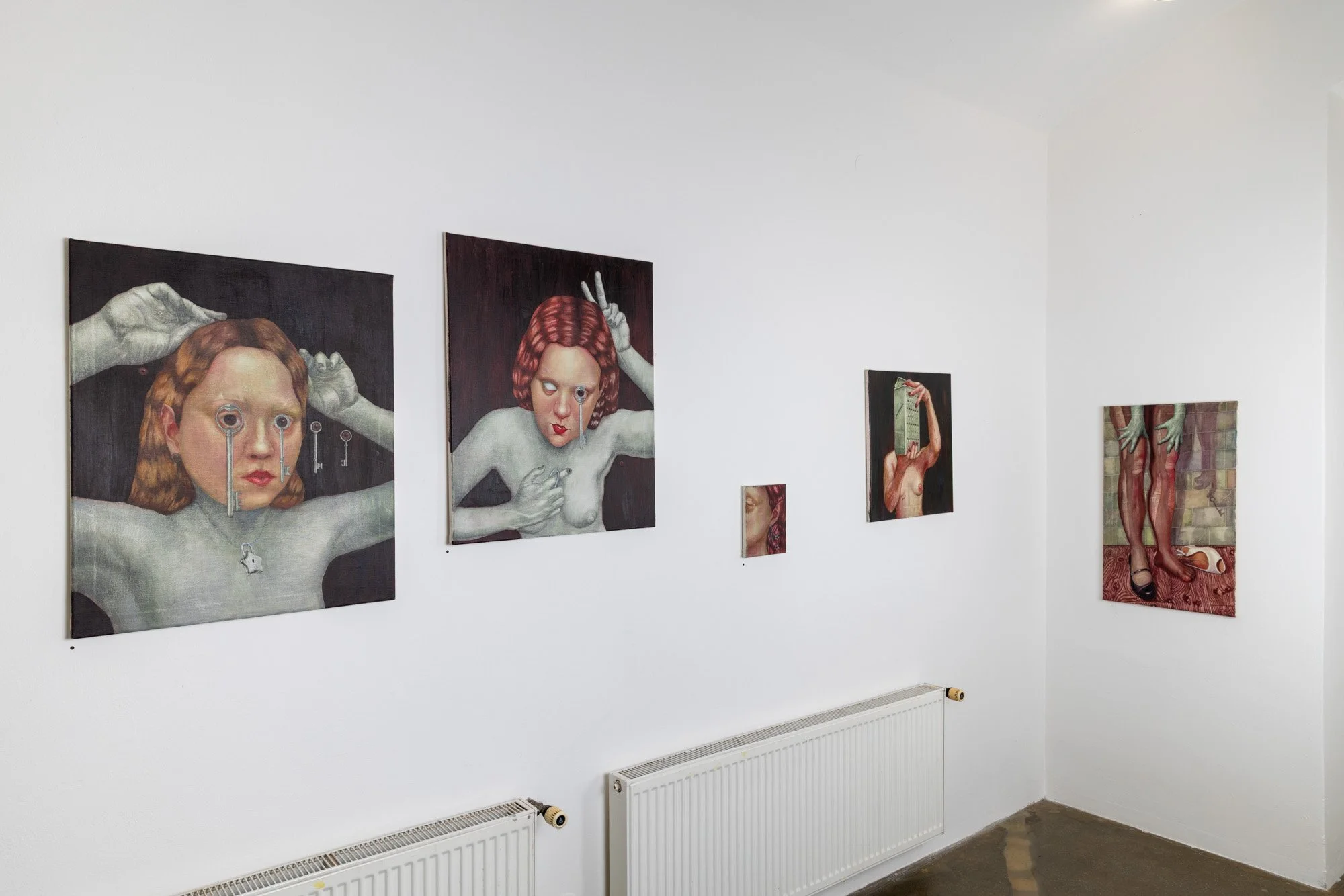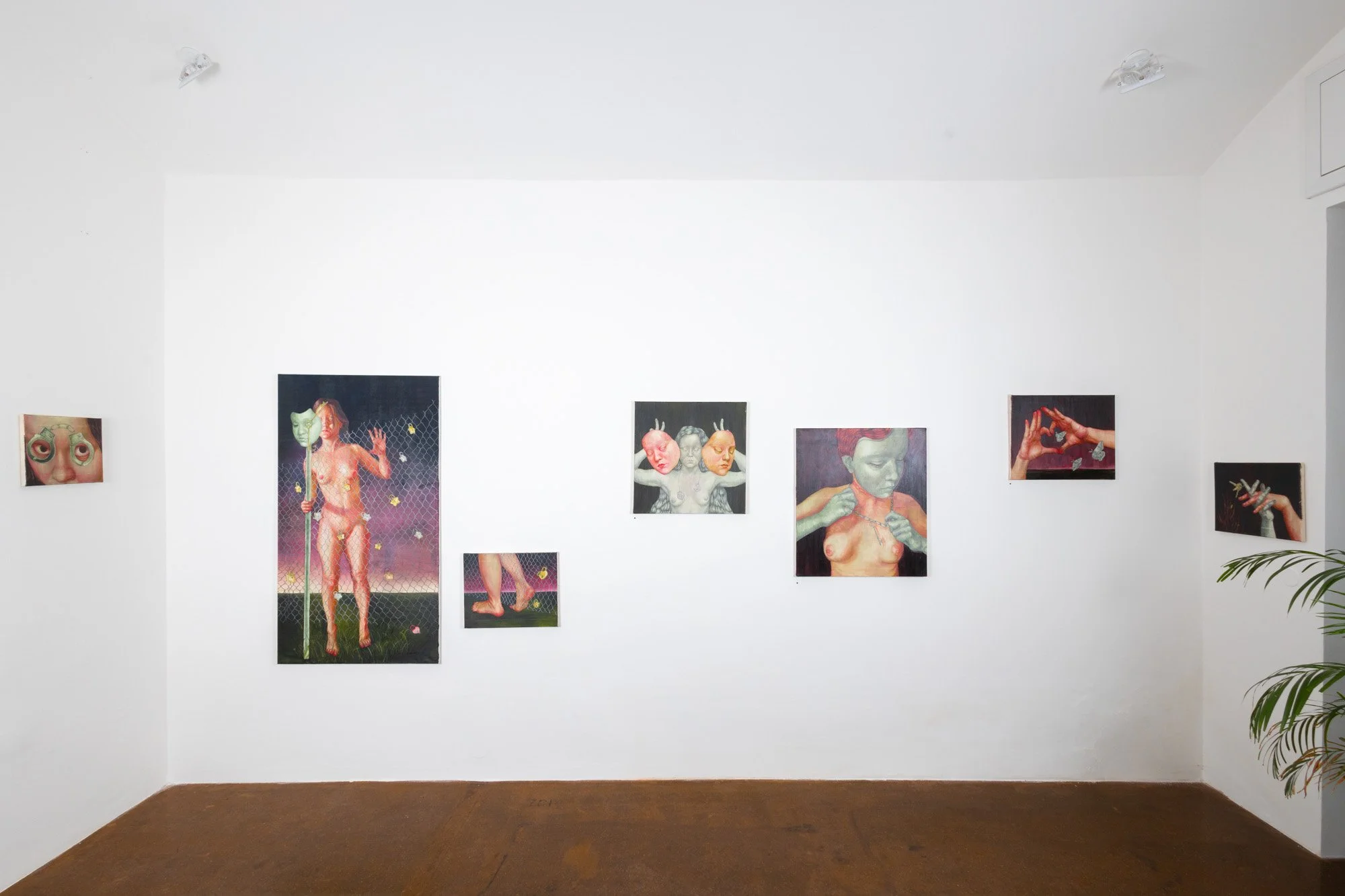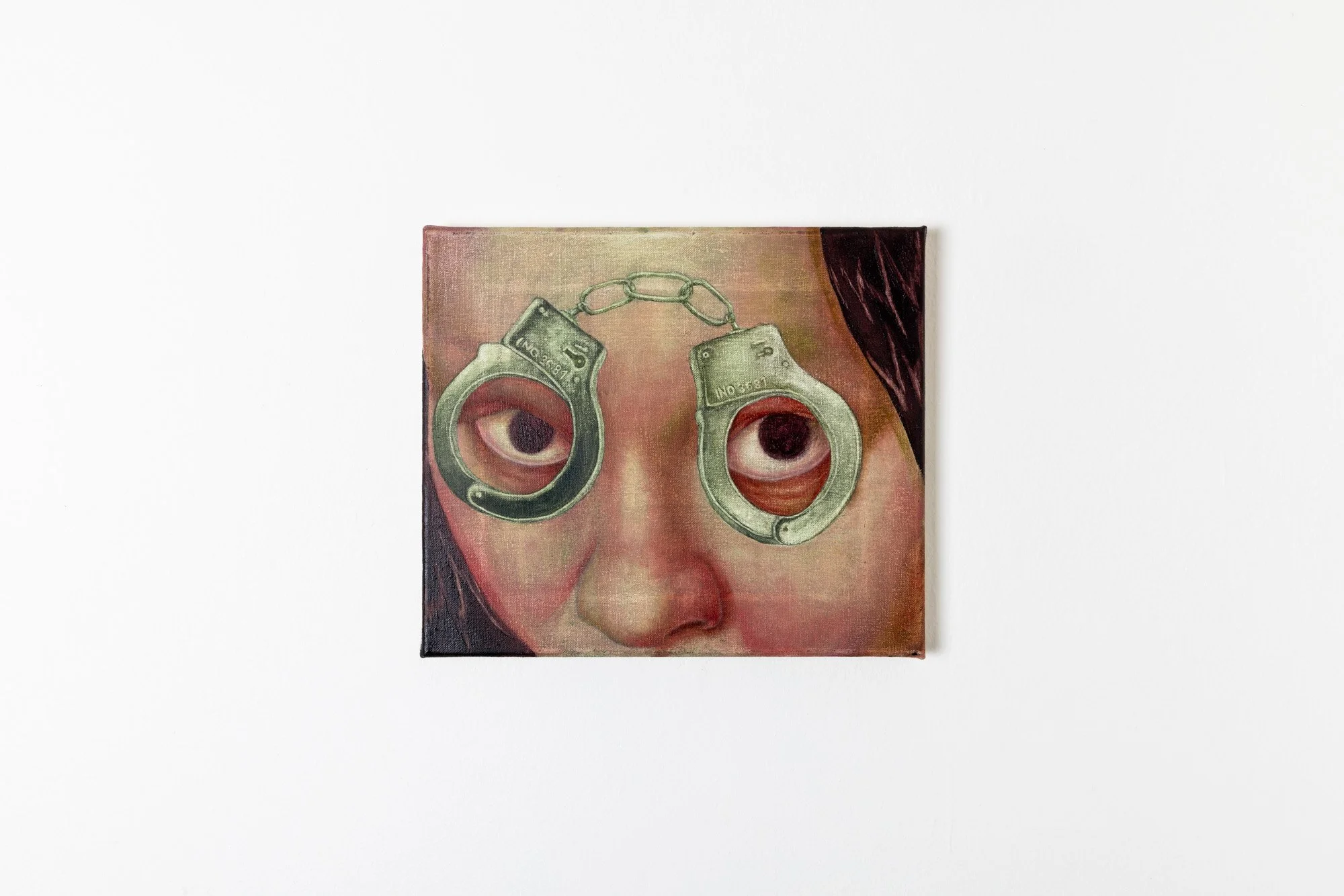Anna Krištofíková
Wild At Steel Heart
HIDDEN Bořivojova
25. 6. 2025 / 22. 8. 2025
Wild at Steel Heart, a solo exhibition by Czech painter Anna Krištofíková, blends surreal figuration, symbols of protection, and emotional tension. A poetic exploration of memory, masks, and the power of what remains hidden.
The title of the exhibition refers to the film Wild at Heart by the recently deceased director David Lynch, who described it as “a search for love in hell.” In the exhibition title, “Steel” symbolizes the mechanisms of self-defense: how we protect our emotions, the masks we construct, and what happens when those defenses fail. Wild at Steel Hearth is also, literally and metaphorically, a return. After her stay in New York, the painter turns back to herself, to her sensitivity and deeper questions, through a new experience of shock and doubt.
Among the recurring motifs are keys and locks, both as visual ornament and as a question: do we truly want to unlock? And do we have the right key? Metallic bodies and black-and-white figures embody a state of armor—sometimes necessary, sometimes harmful. The “ear” gesture, which reappears in the paintings, recalls the moment when one tries to outsmart oneself, believing one will keep emotions under control, yet fails at the decisive moment. It’s a mockery of one’s own naivety, the effort to be prepared that ultimately proves false. The pattern in the hair and other details returns as a motif that references the fluidity of identity and childhood rituals—Anna, as a child, repeatedly traced the knots and grains of a wooden floor onto paper. The same patterns appeared during her experiments with nitrous oxide in New York.
The painting “Guess Who I Am – You Have Three Tries” is inspired by the track of the group WWW Neurobeat. Here the artist depicts a female figure with an empty expression, flanked on each side by two realistically modeled masks. These are neither caricatures nor exaggerated stylizations but rather matter-of-fact faces—as if alternative facets of a single identity. They aren’t different expressions so much as subtle shifts, as if the figure is deciding whom to be. The scene reads like a silent psychological equation: somewhere between role, pretense, and a motionless interior.
The final painting, “6:07,” takes place at dawn. The stars have already faded and the sky is empty. Star-shaped locks are trapped on a fence, a reminder of something that once was. It is a quiet, melancholic image, functioning as a metaphor for extinguished memories.
Wild at Steel Hearth is not a statement about failure, but about understanding what we are willing to lock away to survive—and about the courage to make mistakes, even when our choices aren’t always effective, only desperately human.



















